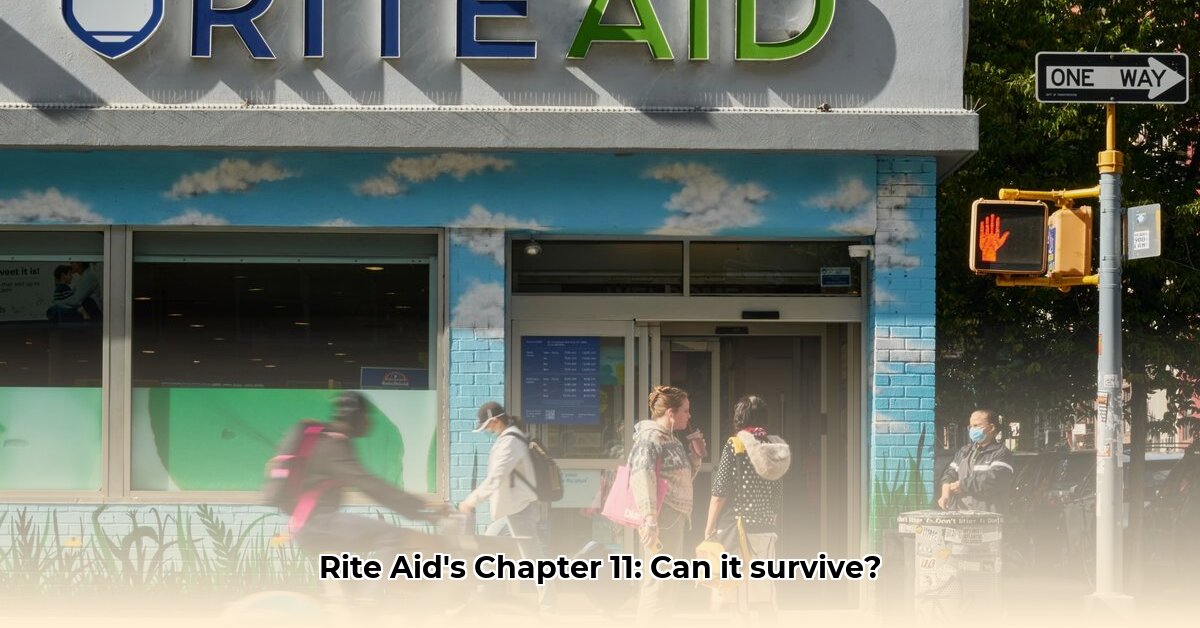
Rite Aid's Chapter 11 Filing: A Critical Juncture
Rite Aid, a prominent drugstore chain, recently filed for Chapter 11 bankruptcy protection, marking a critical juncture in the company's history. The arrival of new CEO Jeff Stein signals a concerted effort to restructure the business and navigate the challenges ahead. This article analyzes the complexities of Rite Aid's situation, exploring the strategic initiatives underway and assessing the potential for a successful turnaround. Will Stein succeed in rescuing Rite Aid from financial distress? The answer hinges on multiple factors, including debt restructuring, operational efficiency improvements, and adapting to the evolving retail pharmacy landscape.
New Leadership, New Strategies
The appointment of Jeff Stein as CEO, alongside Carrie Teffner and Paul Keglevic, represents a significant shift in Rite Aid's leadership. This team brings a combined wealth of experience in business turnaround and operational management, offering a renewed sense of hope for stakeholders. However, the lack of detailed financial transparency has raised concerns among creditors, adding an extra layer of complexity to Stein's task. How will this new leadership team address these concerns while simultaneously implementing a comprehensive restructuring plan? This question lies at the heart of Rite Aid's future.
Navigating a Turbulent Industry
Rite Aid faces challenges both internally and externally. Internally, the company must address high debt levels and operational inefficiencies. Externally, the retail pharmacy industry is undergoing significant transformation, with the rise of online pharmacies, shifting healthcare delivery models, and increased competition from larger chains like CVS and Walgreens. How will Rite Aid differentiate itself and compete effectively in this evolving environment? This is a crucial question that will determine the long-term success of the restructuring plan.
The Multi-Pronged Restructuring Plan
Stein's turnaround strategy involves a multi-pronged approach, focused on several key areas:
Financial Restructuring: Aggressive cost-cutting measures and debt renegotiation are paramount to stabilize Rite Aid's finances. Such measures could include reducing administrative costs, streamlining supply chains, and negotiating more favourable terms with creditors. The success of this initiative will largely dictate how quickly Rite Aid can regain financial stability.
Operational Efficiency: Improvements in operational efficiency are crucial to reduce costs and boost profitability. This might involve optimizing logistics, inventory management, and store operations, fostering a more efficient workflow. This requires both technological upgrades and process adjustments.
Customer Experience Enhancement: Maintaining and enhancing customer loyalty is vital for long-term success. The company must leverage its existing customer base and attract new clientele by improving the in-store and online shopping experience. This may involve modernization of stores and improved digital services.
Strategic Planning for Growth: Developing a long-term growth strategy is essential for sustainable recovery. It necessitates careful analysis of the market landscape and strategic investments focusing on potential growth areas. This could involve collaborations and expansion into new market segments.
Stakeholder Analysis: Balancing Competing Interests
The successful implementation of the restructuring plan requires carefully managing the interests of various stakeholders.
| Stakeholder | Key Priorities | Potential Challenges |
|---|---|---|
| Rite Aid Management | Financial stability, operational efficiency, growth | Resistance from stakeholders, regulatory hurdles |
| Creditors | Debt repayment, company viability, return on investment | Company failure, slow recovery |
| Employees | Job security, compensation, benefits | Layoffs, reduced benefits, uncertainty |
| Customers | Accessible healthcare, quality service, affordable prices | Service disruptions, store closures, price increases |
Regulatory Compliance and Transparency
Navigating Chapter 11 entails strict adherence to legal and regulatory requirements. Transparency and open communication with stakeholders are vital to maintaining trust and avoiding further legal complications. Any deviation from these requirements will significantly jeopardize the turnaround effort.
Conclusion: A High-Stakes Gamble
Rite Aid's situation is undeniably precarious. While the new leadership team offers a glimmer of hope, the road to recovery is long and arduous. The success of Jeff Stein's turnaround plan depends on the effective execution of the multi-pronged strategy, cautious management of stakeholder interests, and a willingness to adapt to the dynamic retail pharmacy market. The outcome remains uncertain, making this a high-stakes gamble with significant implications for the company, its employees, and its stakeholders. This highly competitive sector demands constant and agile adaptation. How effectively Rite Aid evolves remains a key question.